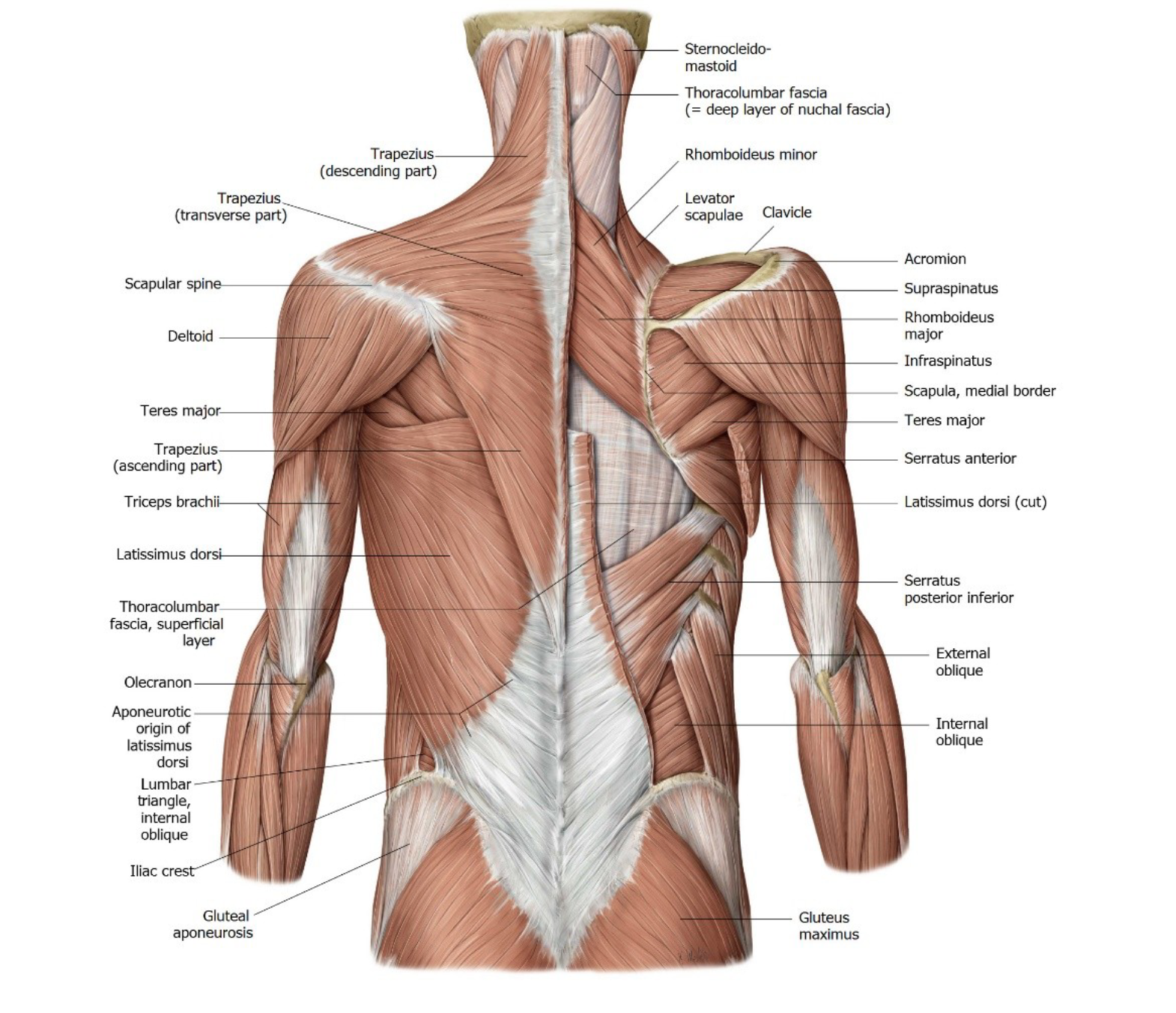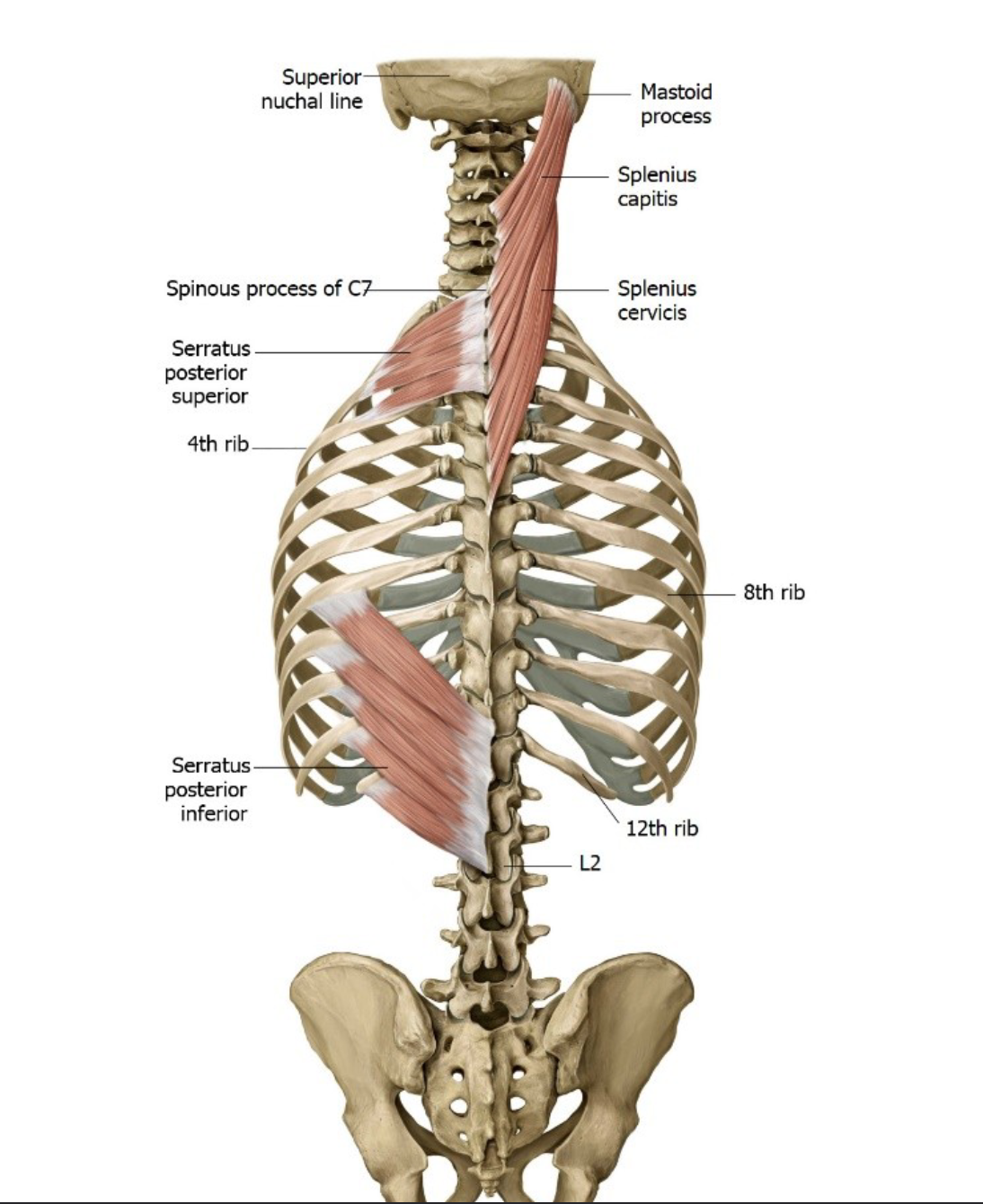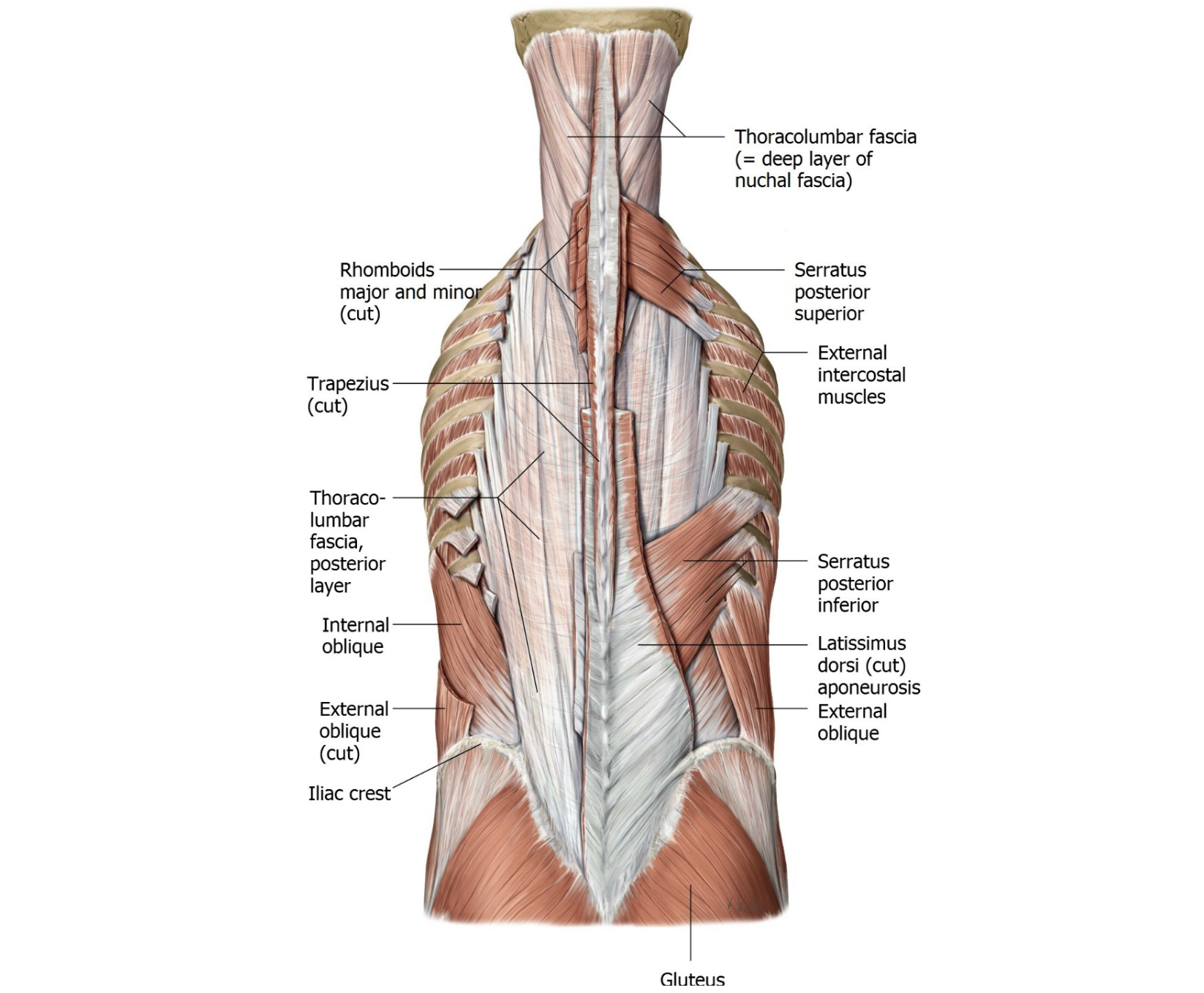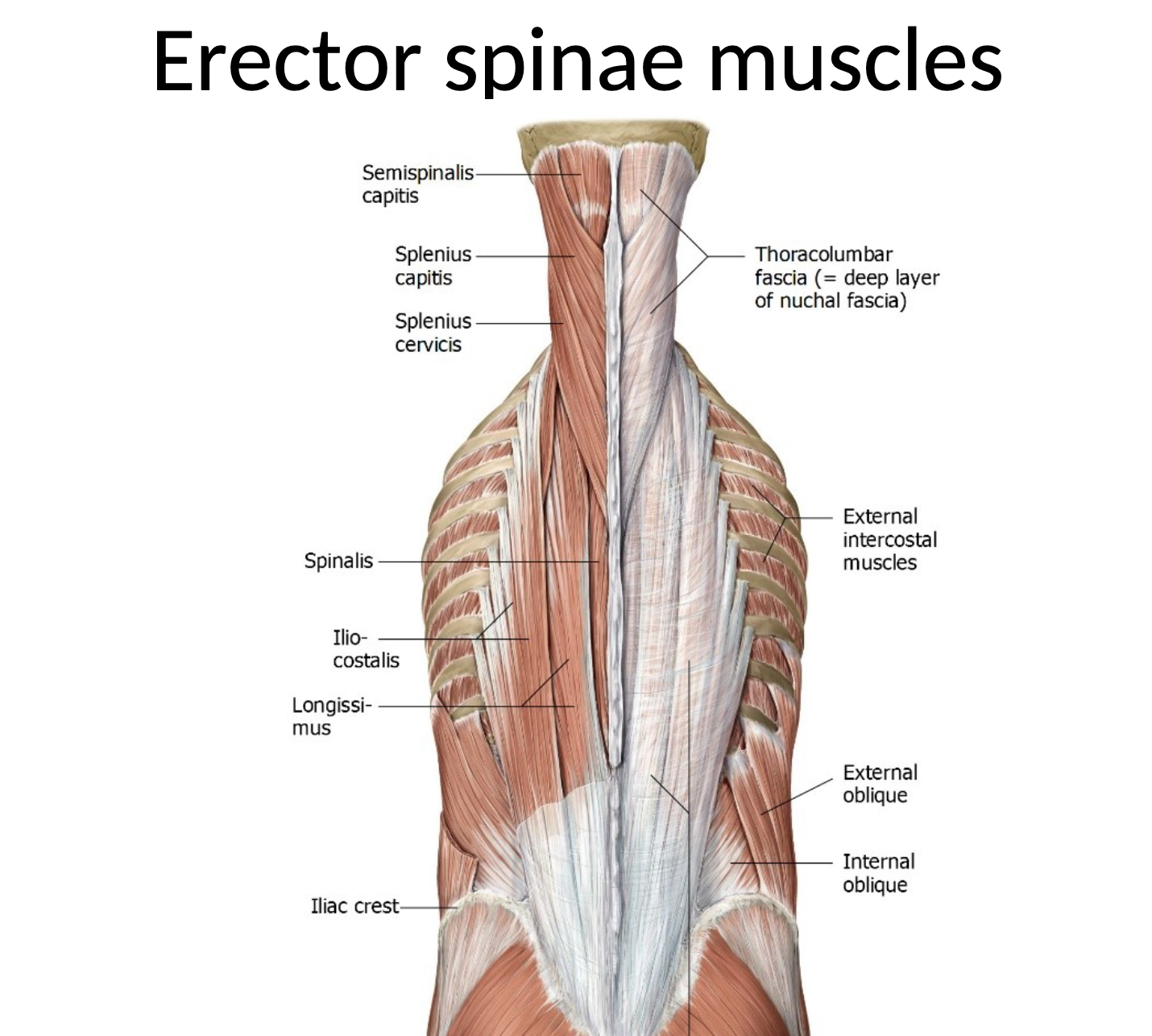6.2 Muscles of the Back
Muscles of the Back
The back muscles are divided into three main categories:
Superficial
Intermediate
Deep
Superficial Muscles
Function: Associated with shoulder movement
Key Muscles:
Trapezius:
Contains three parts:
Transverse part
Descending part
Ascending part
Latissimus Dorsi:
Cut version noted in highlighted diagrams

Intermediate Muscles
Function: Associated with trunk movement
Key Muscles:
Rhomboid Major
Rhomboid Minor
Serratus Posterior Superior
Serratus Posterior Inferior


Deep Muscles
Function: Associated with movement of the vertebral column
Key Muscles:
Erector Spinae Muscles:
Iliocostalis
Longissimus
Spinalis

Extra notes
Detailed Functions and Anatomy of Muscles
Erector Spinae Muscles Subgroups:
Iliocostalis: Located laterally
Longissimus: Central position of erector spinae
Spinalis: Medially positioned
Minor Deep Intrinsic Muscles
Interspinales: Stabilizes the spinal column
Intertransversarii: Also stabilizes the spinal column
Levatores Costarum: Elevates the ribs
Rotatores:
Stabilizes spinal column and important for proprioception
Notable Attachments and Structures
Thoracolumbar Fascia: Deep layer of nuchal fascia
Connections include:
Clavicle
Acromion
Medial border of the scapula
Iliac crest
Lumbar triangle with internal/external obliques
Diagram Highlights
Notable diagrams showing muscle positions, including deep structures like the spinalis and spasm of the trapezius.
Positions of muscles such as Splenius Capitis and Cervicis, seen prominently in lateral views of the back.
Summary
Understanding the back muscles is essential for comprehending their functions in movement, stability, and posture. The complexity of these muscles indicates their crucial role in athletic performance and physiotherapy.